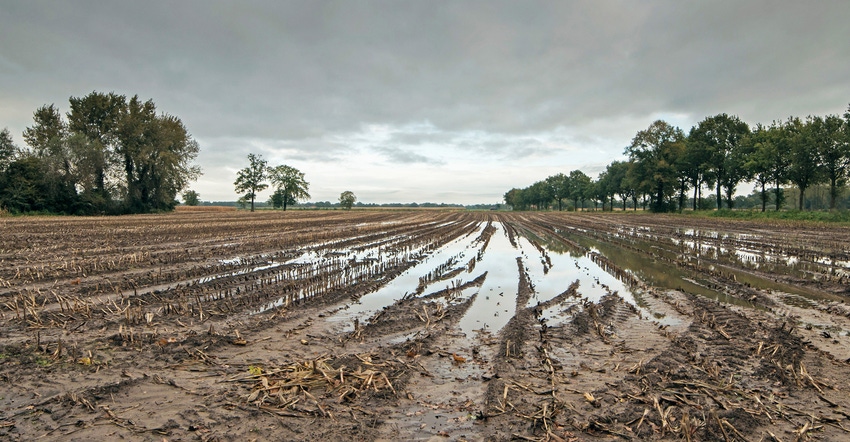
Heavy rains, hail and wind last week continued to challenge Minnesota farmers who would rather be planting than watching weather radar screens.
May 15 — the deadline for planting corn in the state for optimal yield — has passed. Research has shown that corn should be planted by mid-May in Minnesota to avoid yield losses greater than 9%, according to the University of Minnesota Extension. Studies have shown that average yields were reduced by 8% when planting was delayed until May 20, and by 18% when planting was delayed until May 30.
What’s a grower to do?
Patiently stick with your planned seed corn choices until the last week in May, Extension specialists advise.
If planting is delayed until May 22 or later, they suggest reconsidering the relative maturity (RM) of corn hybrids to be planted. If planting occurs May 22-28, consider varieties 5 to 7 RM units earlier than full-season for your region; May 29-June 4, consider varieties 8 to 15 RM units earlier than full-season; and June 5-10, consider varieties 15 or more RM units earlier than full-season.
The latest recommended planting dates for corn harvested for grain, according to U-M Extension, are June 5 for central and northern Minnesota and June 10 for southern Minnesota; and June 20 in southern Minnesota for corn silage.
If soil conditions with late planting are better for emergence than those with earlier planting dates, Extension specialists say slightly fewer seeds may be needed to get a given final plant population. If planting late in very dry conditions, growers may want to plant deeper, down to 2.5 inches, to ensure adequate soil moisture for germination. However, it’s more common for delayed planting to result from wet field conditions. In general, a planting depth of 1.75 to 2 inches is optimal for most planting dates.
Don’t rush soybeans
Extension specialists caution against planting soybeans when soils are too wet. When a planter’s double-disk openers cut through wet, heavy soil, sidewall smearing can occur. This results in compacted soil around the seed that’s difficult for seedling roots to penetrate. Seed furrows can also open up after heavy soil dries when planting in wet conditions. This leads to poor seed-to-soil contact and poor stand establishment.
To limit soil compaction, keep axle loads under 10 tons and properly maintain tire air pressure. This helps the soil, plus it will help your tractor run more efficiently and with less slippage. Use the lightest tractor that can get the job done.
Soybeans do best when planted in ideal conditions and about 1.5 inches deep, modestly firmed into the seed furrow, covered by relatively loose soil and into soils that are 60 to 70 degrees F.
Planting in cool, wet conditions may lead to poor germination and seedling diseases such as pythium. Extended cold and rainy periods after planting magnify these problems, Extension specialists say. Accordingly, keep an eye on the five-day forecast prior to planting.
In some fields, growers may need two planting dates: One for most of the field when it is dry enough, followed by a second planting date to fill in the remaining low areas after they have sufficiently dried.
For more information on late planting, go online to:
About the Author(s)
You May Also Like






